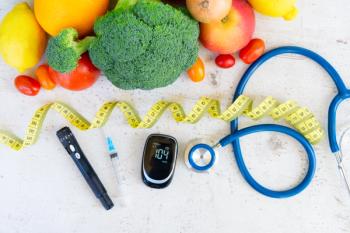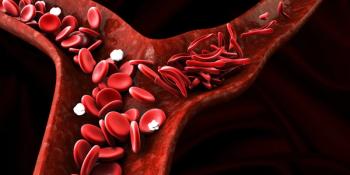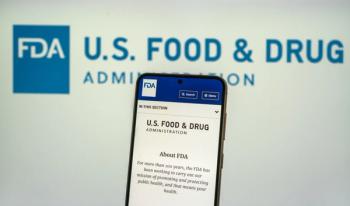
- June 2012
- Volume 16
- Issue 1
2011-2012: The Medical Year in Review
Over the past year, a broad array of medical research has been presented at conferences across the country and the world. Here, we present a selection of the most important findings that may impact the way diseases and conditions are treated in the future. We have broken down the information presented into 11 major therapeutic categories.
Pain/Inflammation
American College of Rheumatology 75th Annual Scientific Meeting
- Soccer, elite long-distance running, weightlifting, and wrestling increase men’s risk of developing knee osteoarthritis, while other sports do not, according to an analysis of previous studies.
- Patients with psoriatic arthritis were 44% more likely than patients with rheumatoid arthritis to have metabolic syndrome, after controlling for age, sex, and ethnicity, according to the results of a prospective observational study including almost 2000 subjects.
- A 2-year trial including 755 rheumatoid arthritis patients found that those who initially received methotrexate monotherapy and later required step-up therapy due to an inadequate response did just as well radiographically as those who received combination therapy from the beginning of treatment, apparently validating the generally accepted approach to treating the condition.
- Women younger than 50 years with rheumatoid arthritis have a significantly increased risk of breaking bones compared with women who do not have the condition, according to the results of a study by Mayo Clinic researchers. The increased risk may be due to steroids used to treat the condition as well as bone loss caused by inactivity or inflammation.
American Pain Society 30th Annual Scientific Meeting
- Patients taking more than 120 mg of methadone per day were found to have an elevated risk of potentially fatal arrhythmia, which may help explain why a disproportionate number of deaths associated with opioid prescription drugs have been associated with methadone.
- Elderly men with mild-to-moderate low back pain were found to have a 30% increased risk of falling, and those with severe low back pain were found to have a 60% increased risk of falling.
Ear/Eye/Nose/Throat
2011 Annual Meeting & OTO EXPO of the American Academy of Otolaryngology—Head and Neck Surgery Foundation
- Weekly irrigation with 70% isopropyl alcohol (IPA) is safe and reduces the accumulation of cerumen in the external auditory canal, according to the results of a study including 40 ears. The researchers report that regular use of IPA has the potential to reduce the frequency of patient visits to doctors for cerumen-related issues.
- Recurrent acute rhinosinusitis (RAR), defined as at least 4 acute rhinosinusitis claims involving a filled oral antibiotic prescription within a 12-month period, is likely to be underdiagnosed, according to an analysis of medical claims data between 2003 and 2008 from a large payer database.
Association for Research in Vision and Ophthalmology 2012 Annual Meeting
- Glaucoma patients with bilateral visu-al field loss have a fear of falling more than double that of patients with other conditions that affect mobility and are significantly less active and less likely to spend time outside of the home due to their fear of falling, according to the results of a study carried out by researchers at Johns Hopkins School of Medicine.
American Society of Pediatric Ophthalmology and Strabismus 38th Annual Meeting
- A 10-year retrospective review of children with a misaligned or displaced lens in the eye found that surgery at an earlier age led to better results. The mean age of surgery for children with a good visual outcome was 4.2 years, compared with 6.3 years for the children with a poor visual outcome.
Diabetes
European Association for the Study of Diabetes 47th Annual Meeting
- Patients who go on to be diagnosed with type 2 diabetes have elevated blood glucose and glycated hemoglobin (A1C) levels up to a decade prior to diagnosis, according to the results of the Hoorn Study, which included a Dutch population-based cohort of subjects aged 50 to 75 years at baseline.
- Poor glucose control among patients with type 2 diabetes is associated with an increased risk of heart failure, according to data from the Swedish National Diabetes Register and national hospital discharge and mortality registries. For each percent increase in A1C, the researchers found that risk of heart failure increased by 12%.
- A high-protein diet appears to be associated with an increased risk of developing type 2 diabetes, according to results of a study of 27,140 participants in the Malmö Diet and Cancer Study. Participants in the highest quintile of protein intake had a 37% greater risk of developing diabetes than those in the lowest quintile of protein intake.
American Diabetes Association 71st Annual Scientific Sessions
- Results of a 10-year analysis from the Diabetes Prevention Program showed that treatment with metformin and lifestyle intervention were both highly cost-effective for patients who were overweight or obese and had impaired glucose tolerance.
- Based on analysis of fasting glucose data on 2.7 million adults around the world, drawn from health examination surveys and epidemiologic studies, researchers have concluded that the number of adults worldwide with diabetes increased from 153 million in 1980 to 347 million in 2008.
- Teenage girls with type 1 diabetes have a much greater cardiovascular risk than boys with type 1 diabetes or nondiabetic girls, according to results of a study. Girls with type 1 diabetes in the study had levels of high-sensitivity C-reactive protein, an inflammatory marker associated with cardiovascular risk, significantly higher than those of boys with type 1 diabetes.
Pediatrics
Pediatric Academic Societies 2012 Annual Meeting
- A study of primarily Hispanic families of low socioeconomic status found that parents with inadequate quantitative skills were almost 4 times as likely as those with adequate quantitative skills to make dosing errors when giving their children medication. Of the study’s participants, 74% were Hispanic, 83% were of low socioeconomic status, and 49% had not graduated from high school.
- In high-income countries, 21.4% of the disease burden is borne by children, but just 9.8% of clinical drug trials focus on pediatric subjects, according to an analysis of trials in the ClinicalTrials.gov database. The disparity is even more extreme in middle- to low-income countries, where 61.9% of the disease burden is borne by children, and just 11.9% of trials focus on pediatric subjects.
American Academy of Pediatrics 2011 National Conference and Exhibition
- Newly updated guidelines for diagnosis and treatment of ADHD have been expanded to cover children between the ages of 4 and 18 years, take into account medications that have been approved to treat the condition in the decade since the guidelines were originally written, and emphasize the chronic nature of the condition.
- Between 1999 and 2007, the prevalence of psychiatric visits among pediatric patients in US emergency departments (EDs) increased from 2.4% to 3%, according to an analysis of data from the National Hospital Ambulatory Medical Care Survey. Underinsured children accounted for 46% and 54% of pediatric psychiatric ED visits in 1999 and 2007, respectively.
First Aid
American College of Allergy, Asthma and Immunology 2011 Annual Scientific Meeting
- Just a third of patients undergoing anaphylaxis due to an insect sting who were taken to the emergency department of a hospital in Toledo, Ohio, were administered epinephrine, which was recommended in recent guidelines developed by the National Institute of Allergy and Infectious Diseases. Instead, many patients received therapies which are commonly used to treat allergic reactions, but not necessarily helpful for anaphylaxis.
American Academy of Pediatrics 2011 National Conference and Exhibition
- A survey of parents with Internet access who took a child to the ED found that 12% sought online medical information about the child’s condition before visiting the ED. Half of the parents said they had used the Internet at least once in the previous 3 months seeking medical information regarding their child, and 15% reported doing so more than 6 times.
- Of 527 pediatricians who responded to a survey by mail, 83% supported the recommendation that ED physicians start patients on asthma controller medications when children present with an acute asthma attack. However, the researchers reported that a previous study found that just 20% of ED physicians do so.
Vitamins and Supplements
22nd European Meeting on Hypertension and Cardiovascular Protection
- Hypertension patients who took a vitamin D supplement for 20 weeks experienced a significant reduction (6.8 mm Hg) in central systolic blood pressure compared with those who took a placebo, according to the results of a study carried out in Denmark. Of 112 patients in the study, 92 had low levels of vitamin D at baseline.
American Heart Association Annual Scientific Sessions 2011
- Heart failure patients with low dietary intake of vitamin C were 2.4 times more likely than those with high vitamin C intake to have high levels of high-sensitivity C-reactive protein, a marker for inflammation and a risk factor for heart disease, and almost twice as likely to die from cardiovascular disease within 1 year, according to the results of a study.
American Thoracic Society 2011 International Conference
- Patients with chronic obstructive pulmonary disease who received a monthly dose of 100,000 IU of vitamin D during a 3-month pulmonary rehabilitation program performed better than those who received placebo by a number of measures, including maximal oxygen consumption, maximal workload, and inspiratory muscle force, according to the results of a study carried out in Belgium.
American Academy of Dermatology 70th Annual Meeting
- Although sunlight is a reliable source of vitamin D, patients experiencing a deficiency should be urged to use nutritional sources to ensure that they get enough of it, according to a 2010 report from the Institute of Medicine on updated dietary vitamin D intake recommendations. Vitamin D is essential for bone health, but its role in protection against cardiovascular events, cancer, and infection is unproved.
Women's Health
American College of Rheumatology 75th Annual Scientific Meeting
- Pregnant women with stable lupus erythematosus had an overall complication rate of approximately 19%— far lower than previously reported— compared with 10% in the general population, according to data from a large multicenter study. The data also showed that just 4% of lupus patients had a severe flare during pregnancy, and just 18% had a mild to moderate flare.
- Postmenopausal women with knee osteoarthritis have a 27% greater risk of falls and a 21% greater risk of fracture than women of similar age without osteoarthritis, based on analysis of data from a prospective, multinational observational cohort study including 50,000 women. Researchers suggested that the fractures are unlikely to be related to osteoporosis.
American Congress of Obstetricians and Gynecologists 60th Annual Clinical Meeting
- Many women curtail their level of exercise during pregnancy based on an inaccurate fear that it will damage their unborn child, according to the results of a study involving telephone interviews with 90 pregnant women. Before getting pregnant, almost half the women exercised moderately for at least 90 minutes per week, but after becoming pregnant, approximately a fourth did. Of those who continued exercising during pregnancy, 62% thought working out longer than 30 minutes was safe, compared with 18% of those who did not exercise during pregnancy.Society for Maternal-Fetal Medicine 32nd Annual Meeting.
- Infants who are born extremely small or extremely large are at increased risk of developing autism, according to an analysis of a California database including 6 million births between 1991 and 2001. Compared with infants of normal weight, infants in the 5th percentile for birth weight were 12% more likely to develop autism, and infants in the 95th percentile were 21% more likely to develop autism.
Oral Care
American Association for Dental Research 2012 Annual Meeting
- Subjects who brushed their teeth twice a day and then used a mouth rinse with 0.1% cetylpyridinium chloride built up significantly less plaque over a 2-month period than those who only brushed their teeth, according to results of a study including 34 participants. At the end of the study, mean plaque coverage in the rinse group was 9.1%, compared with 18.8% in the control group.
- Use of low-fluoride toothpaste by very young children increases the risk of developing cavities without significantly reducing the risk of developing fluorosis, according to a meta-analysis of 3 previous studies including 4635 participants. Low-fluoride toothpastes, which have fluoride concentrations less than 600 ppm, are not currently available in the United States, but some standards-setting groups are debating whether to allow them.
- Patients with diabetes who were treated for periodontal disease were 13% less likely to see a physician, 33% less likely to be hospitalized, and racked up 25% less in medical costs, according to results of a 3-year study of patients who had both health and dental insurance. The researchers note that patients who chose to take advantage of available periodontal care might have made other healthy choices, although the 2 groups did not differ in measures of general health at the beginning of the study.
Topicals
2012 Society for Investigative Dermatology Annual Meeting
- Combined treatment with oral and topical tacrolimus over a period of 14 weeks reduced the severity of atopic dermatitis by up to 65% to 70%, according to a small study including 12 patients. After a 4-week washout period, participants took oral tacrolimus only for 3 weeks, oral and topical tacrolimus for 3 weeks, and topical tacrolimus only for 8 weeks.
- A topical boron-based, anti-inflammatory agent produced significantly greater improvement for half of patients with mild or moderate plaque psoriasis than an inert ointment, according to results of a bilateral comparison study. The results showed that, after 6 weeks, twice-daily application of 2% AN2728 was associated with greater improvement in 54.1% of lesions.
American Academy of Dermatology 70th Annual Meeting
- A researcher from New York University Medical Center criticized proposed changes to sunscreen labeling that would limit products with SPF above 50 to being labeled as “SPF 50 plus.” He noted that SPF ratings are based on application of 2 mg/cm2 of lotion, 2 to 4 times the amount typically used. According to his research, SPF ratings above 50 can offer significantly increased protection when used at these lower application levels.
- Two gels that combined clindamycin phosphate 1.2% with another agent for treating acne vulgaris produced positive results in phase 3 trials. One gel, which also included tretinoin 0.025%, was associated with a 52.1% reduction in acne lesions and yielded at least a 1-grade improvement in nearly twothirds of patients. The other gel, which also included benzoyl peroxide 3%, was associated with acne improvement by 2 grades out of 4 in 39% of patients.
Stomach/GI
American College of Gastroenterology 76th Annual Meeting
- Probiotics have the potential to treat common gastrointestinal symptoms, such as diarrhea, bloating, and inflammation, according to the results of a number of studies. One meta-analysis found that probiotics reduced the risk of diarrhea associated with antibiotics and Clostridium difficile by approximately 60%. In a placebo-controlled study including healthy subjects and those with psoriasis, ulcerative colitis, and chronic fatigue syndrome, the probiotic Bifidobacterium infantis 35624 led to increased levels of the anti-inflammatory cytokine, IL-10, and reduced levels of C-reactive protein and the pro-inflammatory cytokines TNF-alpha and IL-6.
- A study of combination therapy with allopurinol and low-dose thiopurines for irritable bowel syndrome (IBS) provides hope for patients who have failed conventional thiopurine therapy. Almost three-fourths of IBS patients in the study were still on the combination therapy after 60 months.
- A diet low in natural sugars can reduce symptoms in patients with gut disorders such as IBS, according to a researcher from Monash University in Australia. He described studies showing that a low-FODMAP (fermentable oligosaccharides, disaccharides, monosaccharides, and polyols) diet relieved IBS symptoms while a high-FODMAP diet increased IBS symptoms. The diet is well known in Australia, but less so in the United States.
- Taking nonsteroidal anti-inflammatory drugs (NSAIDs) in high doses, over a long duration, and with greater frequency may lead to increased risk of developing Crohn’s disease and ulcerative colitis, according to an analysis of data on 76,814 women in the Nurses’ Health Study. Taking aspirin, by contrast, was not associated with increased risk of Crohn’s disease or ulcerative colitis. The researchers pointed out that, even for those taking NSAIDs, the risk of developing the conditions remains low. Digestive Disease Week 2012.
- Gastroesophageal reflux disease (GERD) is 4 times more common among those with IBS than among those without IBS, according to the results of a meta-analysis of 13 studies including 43,939 participants. The pooled prevalence of IBS in the 13 studies was 11.6% and the odds of GERD in those with IBS compared with those without the condition was 4.17.
Cold/Cough/Allergy
American College of Allergy, Asthma & Immunology 2011 Annual Scientific Meeting
- More than one-third of children with asthma who stopped using long-acting beta agonists (LABAs) once their condition was under control, as recommended by the FDA, lost control of their asthma within the subsequent 3 months and required further treatment, according to a study conducted by researchers at the University of Louisville. The results indicate that some patients may need long-term LABA therapy.
- A survey of 2500 adolescents and adults with asthma found that periods of worsening symptoms lasted longer than a week for approximately 25% of respondents and longer than 3 weeks for 6% of respondents.
- Children with severe egg allergies can safely receive the trivalent influenza vaccine in a single dose, according to interim results of a 2-year multicenter trial. Researchers randomized children with the allergies to receive the vaccine in a 10% to 90% split dose of vaccine or a 0% to 100% single dose designed to mimic the split dose and retrospectively analyzed children with the allergies who received a split dose or single dose from a physician. None of the children had an allergic reaction.
World Allergy Organization XXII World Allergy Congress
- Hives occur most commonly among women in their 30s, according to the results of a study conducted in Mexico between 2005 and 2011. The researchers selected medical records for 2337 patients from the allergy service of a medical center, of whom 90 had hives.
Articles in this issue
over 13 years ago
Cortisone, Acne Products, Sunscreen Most Popular OTC Topicalsover 13 years ago
Allergy Treatments for All Symptomsover 13 years ago
The Common Cold: Tips for Avoidance and Reliefover 13 years ago
Empowering Patients to Combat Obesityover 13 years ago
OTC Case Studies: Guiding Patients in Self-Careover 13 years ago
Evaluating the Interaction Risk of Herbal Supplementsover 13 years ago
Promoting the Proper Use of Emergency Contraceptionover 13 years ago
Mitigating the Pain of Migrainesover 13 years ago
Aspirin Therapy Adherence Low Among Womenover 13 years ago
Fewer Amputations as Diabetes Management ImprovesNewsletter
Stay informed on drug updates, treatment guidelines, and pharmacy practice trends—subscribe to Pharmacy Times for weekly clinical insights.

















































































































































































































